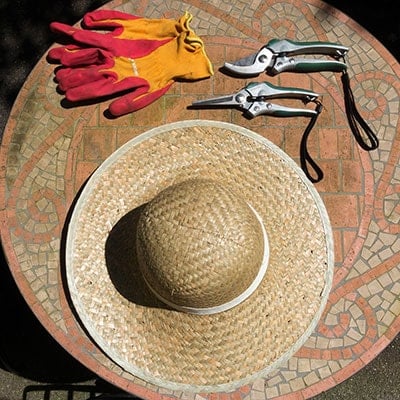
Gardening is one of our favourite hobbies and in this fast moving world, it has many benefits. You get a pretty space to enjoy and unwind in at the end of a busy day and to grow some of your own food. I love growing herbs like thyme, rosemary, chives and parsley by the back door, using them freshly picked in cooking. A small budget doesn’t have to hold you back and it doesn’t mean small ideas, a touch of creativity and planning ahead can help a small budget go a long way.
Steps to gardening on a budget
1. Use annual seeds
A packet of annual seeds makes hundreds of plants. Hardy annuals are the easiest for inexperienced gardeners, they can be sown directly into the soil at this time of year. Flowering plants like Californian poppy, Nigella and sunflowers bring lots of colour into the garden, and birds and bees will be attracted by English marigolds and poppies.
The list of plants easily grown from seed is almost endless and it’s a great way of introducing the joy of gardening to children.
2. Sow vegetables from seed
Vegetables like lettuce, radish and carrots are easy to grow from seed, sow them directly into the ground in late spring when everything has warmed up, and continue through the summer to have a steady supply of flowers and vegetables.
3. Plant spring bulbs in September
Plant spring flowering bulbs in September to cheer up the garden at the end of winter, and they’ll grow again every year.
4. Work with your neighbours
Grow more than you need and swap plants with gardening friends and neighbours to get a wide mix of plants.
5. Garden organically
Not only is organic gardening cheaper, it’s better for all of us, encourage toads, birds, and small mammals into the garden by providing them with food, water and habitats, they’ll repay you by eating pests!
Toads eat insects, slugs, spiders and snails and small nesting birds eat a whole range of insects.
6. Compost
Install a compost bin, or two if there’s room, so you can recycle kitchen and garden waste and turn it into compost that’ll improve the soil, rather than buying soil improver.
7. Plan ahead
Plan the layout of your garden so you don’t have to spend time and money re-doing it. Sit down and make some notes about the sunniest and shadiest parts of the garden, the best place to site a patio, remember the essentials such as a shed for storage, a play area for the children, a washing line and the best place to store bins so they’ll be screened.
8. Invest in quality
Choose good quality fences and sheds and maintain them by painting with a preservative so they last as long as possible. Most fences and sheds come either dip or pressure-treated, with the latter giving up to 15 years of anti-rot protection.
Author Bio
Formerly a garden designer with a book about planting design and two RHS medals under her belt, Jill is now a freelance garden writer, stylist and photorapher, writing about plants and gardens, growing vegetables, fruit and herbs organically and as sustainably as possible.




